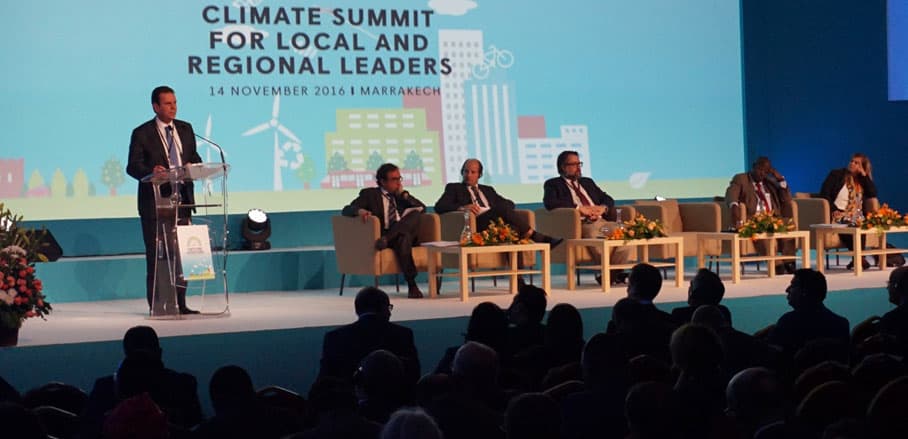COP22 through the Urban Lense
By Sarah Schneider and Lisa Lebershausen
Three weeks after the Habitat III conference in Quito, Ecuador, the 22nd Conference of the Parties (COP 22) to the UN Framework Convention on Climate Change (UNFCCC) is currently taking place in Marrakesh, Morocco. Sarah Schneider and Lisa Lebershausen look at the the international climate change conference through an urban lense.
After the ambitious targets set by the Paris Agreement one year ago, COP22 in Marrakesh, Morocco is referred to as the “COP of Action”. The 22nd Conference of the Parties (COP 22) to the UN Framework Convention on Climate Change (UNFCCC) represents another element in a series of prominent international conferences which took place over the past two years. These international endeavours successfully resulted in the 2030 Agenda for Sustainable Development, the Addis Ababa Action Agenda of the Third International Conference on Financing for Development, the Sendai Framework for Disaster Risk Reduction, and the New Urban Agenda.
Around 25,000 delegates, observers and representatives from various national and subnational governments, sectors and initiatives came together in Marrakesh this November to discuss the implementation of the Paris Agreement. Without doubt, implementation requires financing on the one hand, and decisive commitment from public, private, and civil society actors to achieve sustainable development on the other hand.
Local and regional leaders widely recognised their significant role in reducing greenhouse gas emissions and increasing resilience towards the consequences of climate change. Many are already taking action and reporting proudly on their achievements. However, these actors require the political mandate and sufficient resources to assume more responsibility, above all from their respective national governments.
Therefore, horizontal and vertical coordination between and across different levels of government were identified as key . Yet success of climate action also depends on the participation of further stakeholders, in particular financing institutions and private investors. Some mayors even call for more ambitious policies and targets as well as consequent monitoring from the national government.
In Marrakesh, lively discussions throughout many plenary sessions and side events focused on innovative ways of enhancing the access of subnational actors to financing. Speakers from regional and city networks as well as financing institutions stressed the need for capacity development at the local level, including for the preparation of bankable projects and enhanced credit worthiness. While certain sectors such as energy and mobility are promising quick wins, the importance of integrated planning across all sectors should thereby not be neglected. In addition, high potential for climate change mitigation was acknowledged for the building sector.
In light of all these influential factors and their enormous investment requirements, “Financing the Sustainable Transition of Territories” was thus a suitable topic of the 2nd Climate Summit for Local and Regional Leaders held on November 14, 2016 at the outskirts of Marrakesh. Well attended by around 1,500 participants from 140 countries, this gathering served as a platform to discuss common challenges of the subnational level and to present best practices in order to address these.
- COP22 through the Urban Lense - 15. November 2016
